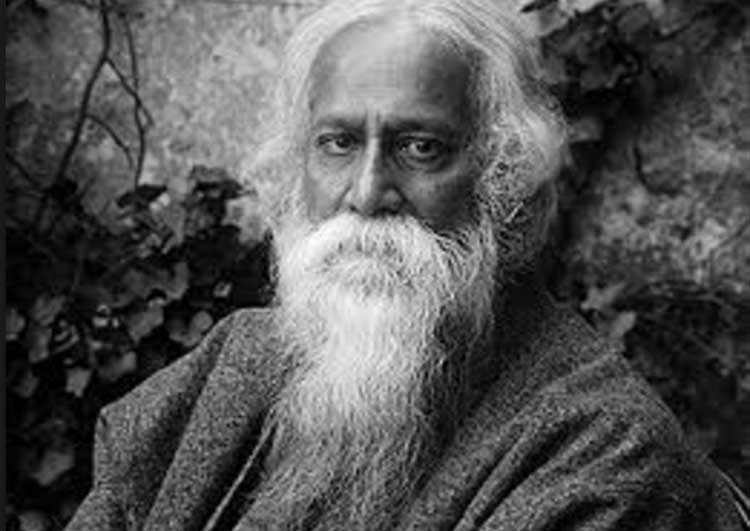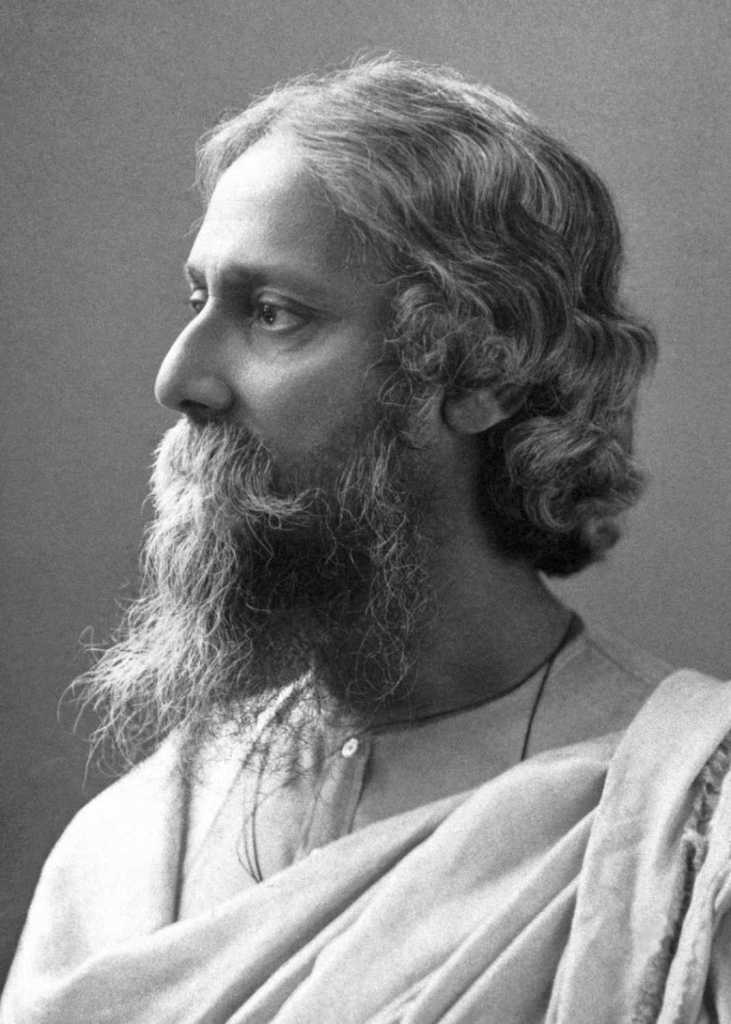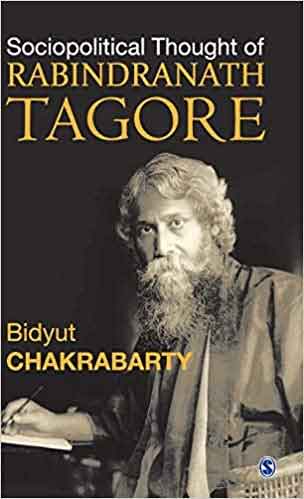
[Analyzing the philosophy of Nobel laureate of Bengal, Rabindranath Tagore reflected in his literary works, on the occasion of his 160th birth anniversary.]
“I have become my own version of an optimist. If I can’t make it through one door, I’ll go through another door—or I’ll make a door. Something terrific will come no matter how dark the present.”
Nobel laureate of Bengal Rabindranath Tagore had famously quoted many years back, reminding himself of the tremendous power of his words and philosophy amid dark, unprecedented times. Did he know that even after almost eight decades of his death, his literary creations will sustain in the readers’ minds, become vehicles of change, fierce spirit and empowerment?
On May 8th, Indians all over the world remembered Tagore and his timeless creations during his 159th birth anniversary celebrations (which are happening exclusively online this whole month, due to COVID-19 restrictions). On this auspicious occasion, we would strive to know what made him the true humanist, the Renaissance man, the quintessential artist who remained deeply relevant for all ages, and who lived on as the voice of India’s spiritual heritage.
Tagore’s works, ranging from his Nobel prize winning collection of poems ‘Geetanjali’ to his feminist plays Chitrangada and Chandalika, from ‘Rakta Karabi’ (Red Oleander) to ‘Shesher Kobita’ (The Last Poem) are distinctively remembered for his revolutionary thinking, for his relentless optimism and lyricism, as the bard created his own universe of boundless possibilities through his literature. Some of the prominent themes and enduring truths of his works are discussed succinctly in the sections below:
Love and spirituality in Tagore’s literary works:
Love, the quintessential emotion of longing between man and woman has been manifested with various subtle layers in Tagore’s songs poetry, drama and fiction. On one hand, Tagore’s love songs that celebrate the union between man and woman are tremendously romantic, with sensuous undertones, like the way he describes Radha’s pining for love, her abhisaara (union) with Lord Krishna in his Hymns of Bhanusingha. On the other hand, they are esoteric and metaphysical in their lyrics, their overall treatment, where love is akin to the soul-stirring ritual of sadhana, the primordial rhythm of souls that unite to embrace spiritual fulfilment. Often, Tagore researchers say that in his songs and poems, ‘prem’ (love) and ‘puja’ (worship) intermingle with deep, inexplicable beauty.
The iconoclast Amit’s love for his soulmate Labonyo whom he lovingly calls ‘Bonya’, the raging flood in Tagore’s romance novella ‘Shesh-er Kobita’ (The Last Poem), is out-and-out unconventional and metaphysical. In Labonyo, Amit finds the sudden surge of his unwritten poetry, their bond of mutual affection and their intellectual union is a manifestation of the consummation of their emotions without the mundane entanglement of marriage. Love, the all-consuming emotion also comes with myriad other manifestations in his drama ‘Chitrangada’, his novel ‘Chokher Bali’, his novella ‘Nastanirh’ (The Broken Nest), where the protagonists are torn between life choices, swept away by emotional forces and ultimately seek the path of self-realization and enlightenment.
[The cinematic adaption of ‘Shesher Kobita’ (The Last Poem), directed by Suman Mukhopadhyay]
Tagore, the feminist with deep sensitivity:
The feminine psyche, the torrents of emotions heaving within a woman’s heart has been manifested in the myriad heroines of the bard Tagore’s novels, drama and stories in their most elemental forms. No other wordsmith before him could accomplish feminist narratives delving into the depths of the hearts of women, bringing out their anguish, their angst, their tales of emancipation and salvation so aptly, in such heart-rending manner. Her heroines Bimala, Bindodini, Charulata, Mrinal, among numerous others rise amid their own ashes like the phoenix, shattering the myths of well-nurtured patriarchy, rediscovering themselves as the center of their own universe.
[A scene from Charulata, adapted from Tagore’s ‘Nastanirh’ by the Oscar-winning filmmaker Satyajit Ray]
https://www.youtube.com/watch?v=KpwEbUKGIQs
The theme of revolution in Tagore’s works:
The theme of revolution in Tagore’s poetry and his songs of the ‘Swadesh’ section of Gitabitan stems from revolutionary artistic consciousness. It is his artistic consciousness with which he refuted not only the prevalent British imperialism, but also the constricted societal values which he had shunned, fueled by his intellectual understanding of the world. His poetry and his novels including ‘Gora’ and ‘Ghare Baire’ (The Home and The World) were born with revolutionary protagonists Gora and Sandip who pose existential questions regarding the essence of nationalism, self-identity and personal freedom. The bard’s political consciousness, thus, was entwined with his spirit of revolution, and it is also through the revolutionary use of lyrics in his songs that he intended to eradicate the stifling dark of the status-quo, of the existing stature of the society of his times.
The spirit of revolution which became a prominent theme in Tagore’s poetry, was intertwined with his patriotic fervor, as he wrote those phenomenal lines, “When the Mind is Without Fear, And the Head is Held High”, symbolizing a new, awakened India. British colonialism was the prevalent reality of those times and his works took succor from the political upheaval and the great social unrest of those days. His political consciousness was unique and complex in its approach. On one hand, he refuted the traditional notion of nationalism which was eclipsing young intellectual minds of his times, as he declared: “There can be no question of blind revolution, only a steady and purposeful education.” On the other hand, through his writings and political philosophy, he continued to foster the spirit of nationalism, but only by embracing an egalitarian, assimilative society.
Tagore and his legacy:
Gurudeb Tagore’s innumerable literary works and their legacy remains alive in the philosophy of self-exploration, the human quest to unfold the vast, boundless universe and its elusive creative energies. On one hand, we see him as the romantic, mystical bard who knows that the yearning and pathos of the human soul is intricately connected with the idea of love, longing and hope. On the other hand, his socio-political ethos reflected in his fiction, essays and more is intertwined with a subtle, yet intensely revolutionary spirit that will live on for generations. For all this and much more, Tagore will be remembered as a ‘Yugpurush’ (an embodiment of numerous eras), through his timeless art and literature.
References:
https://thefinancialexpress.com.bd/views/relevance-of-tagore-to-the-21st-century-world
https://www.nobelprize.org/prizes/literature/1913/tagore/biographical/
https://en.wikipedia.org/wiki/Rabindranath_Tagore#Impact_and_legacy
Lopa Banerjee is a critically acclaimed poet, author, editor, translator living in Texas, USA, but originally from Kolkata, India.
GET COUNTERCURRENTS DAILY NEWSLETTER STRAIGHT TO YOUR INBOX














































